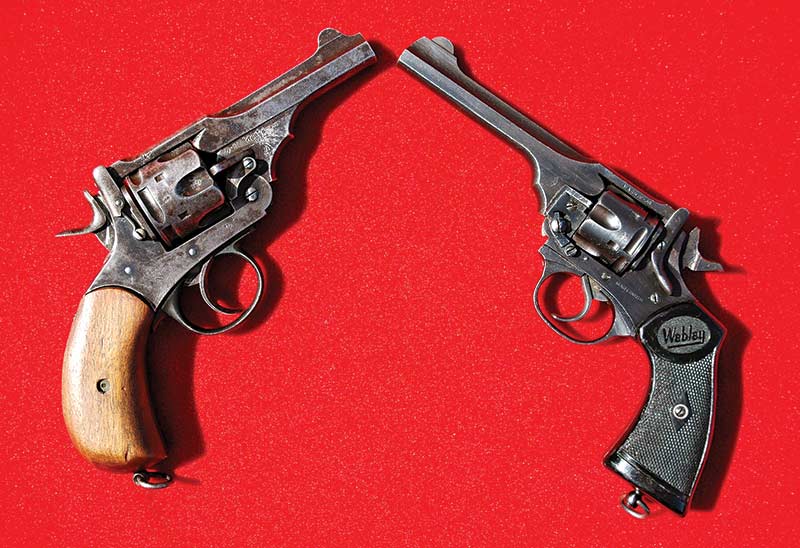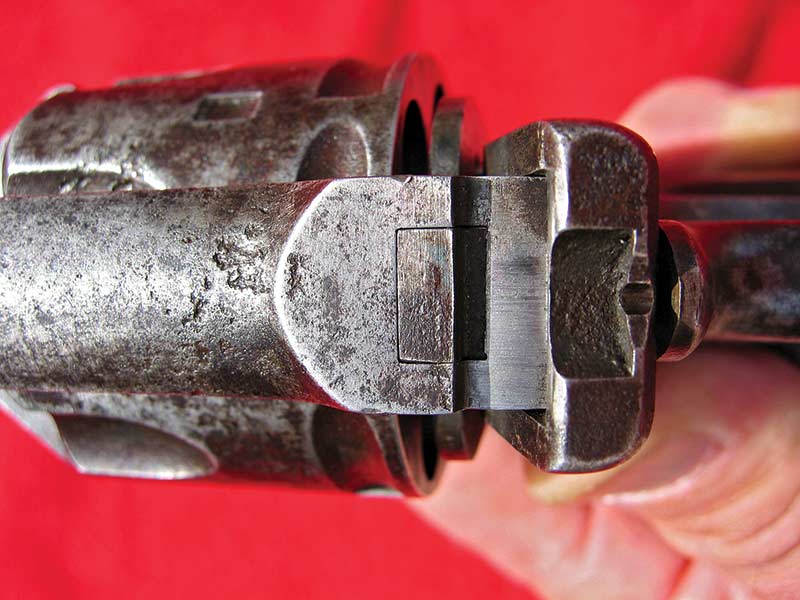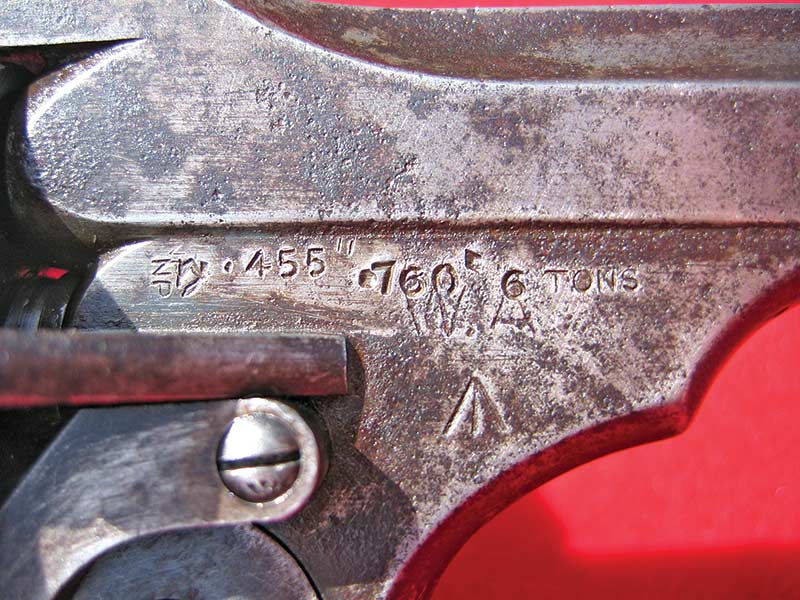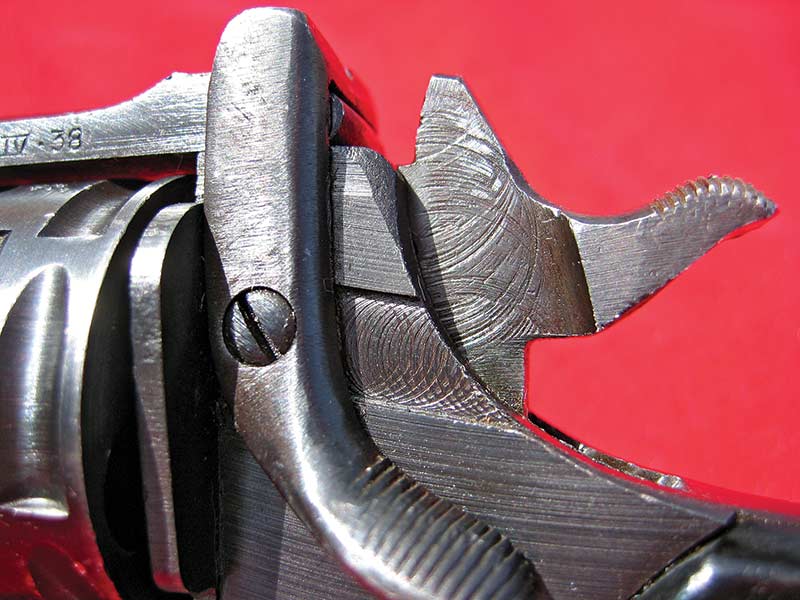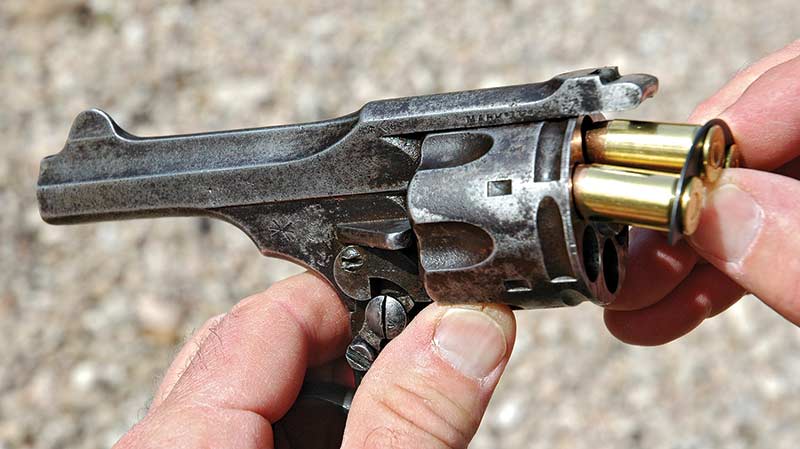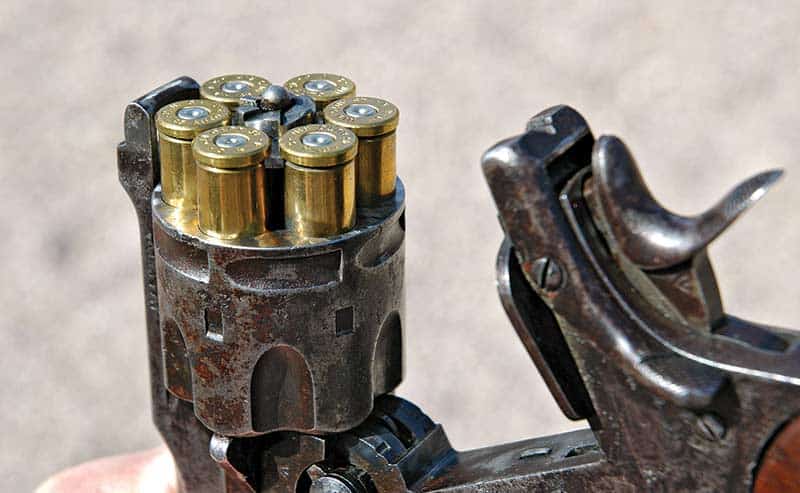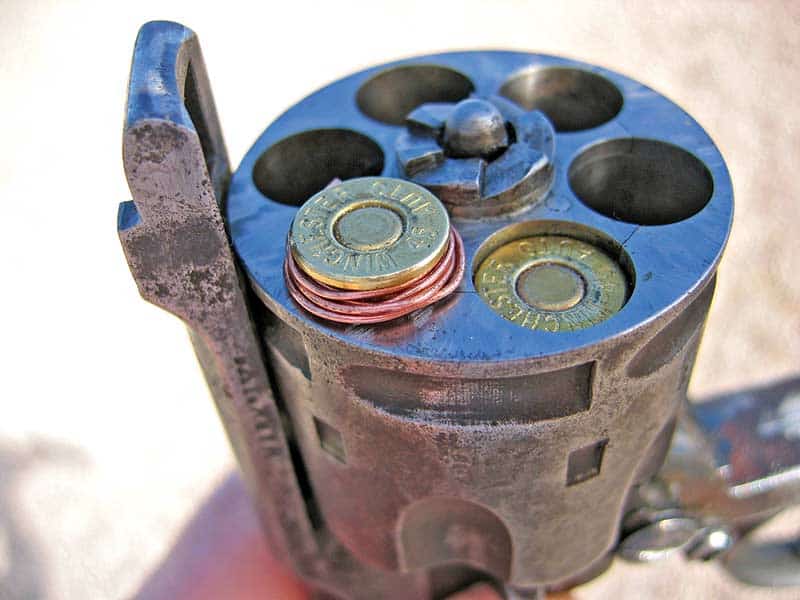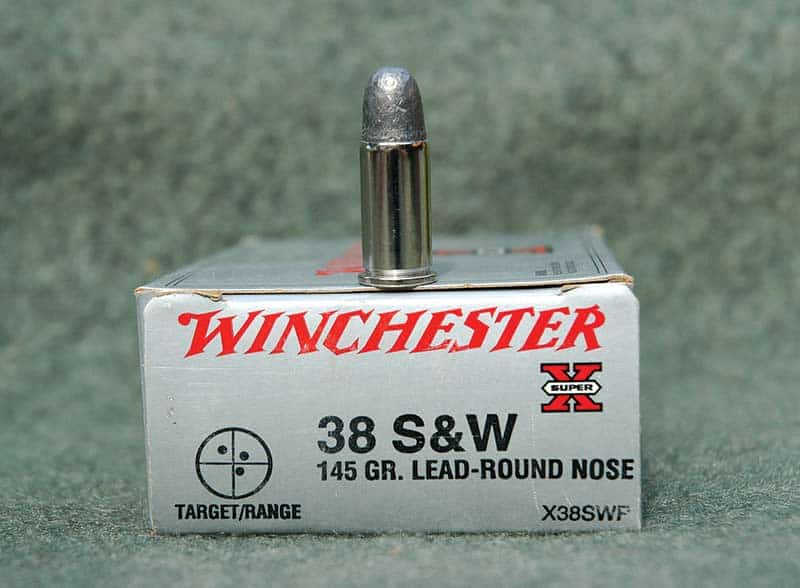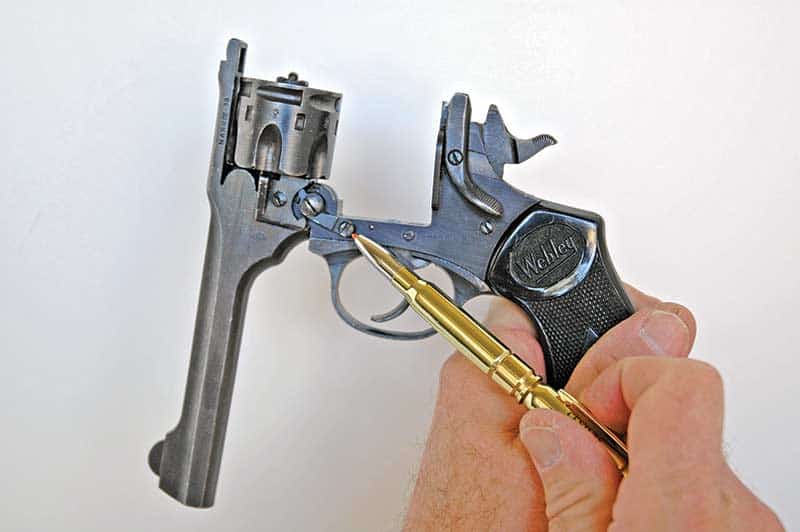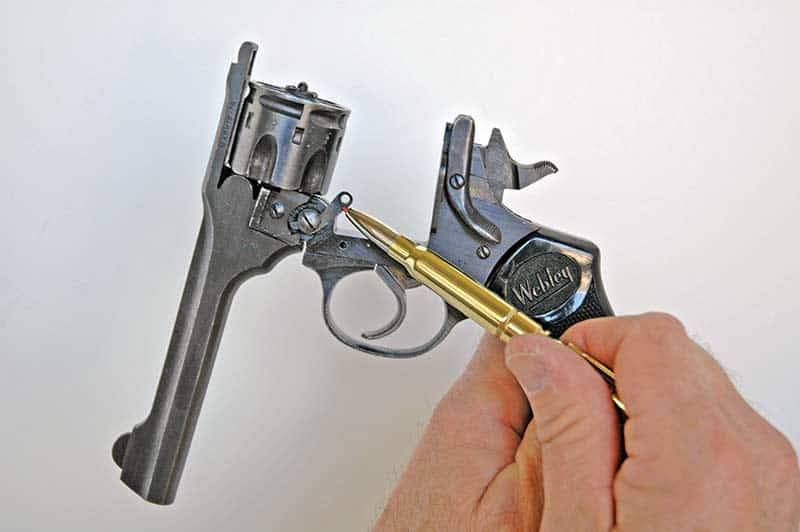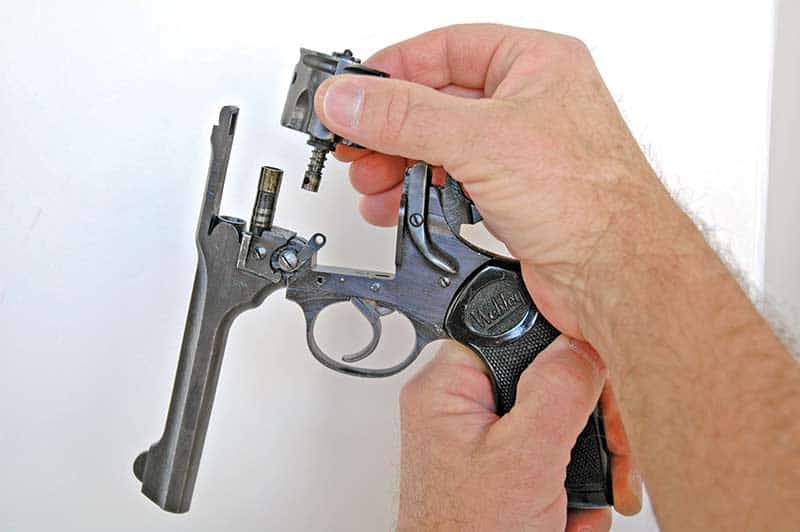Those Magnificent Webleys
(And Enfields)
The ugly ducklings of the handgun world
I admire the Brits. Once they get their hands on a rugged, battle-proven firearm design, they just hang onto it. Witness the basic Lee-Enfield rifle. Adopted in 1888, it soldiered on, in one form or another, right into the 1970s.
And then there’s the Webley revolver, maybe the most unappreciated handgun ever. Although surplus stocks are long gone, Webley and Enfield revolvers are still seen at gun shows fairly regularly. Being weaned on Smith & Wessons and Colts, I suspect many are put off by the Webleys archaic break-open design, curious-looking exposed parts and screws, and the huge 38 ounce 11″ handgun it evolved into as the Mark VI of WWI. Truth is there’s more to this old gun than meets the eye.
Adopted by the British government in 1887, the Webley Mark I along with the .455 Webley Mark I cartridge became standard issue for the armed services. Like the Lee-Enfield, the basic design of the Webley soldiered on well into the 1960s, and well after the “official” adoption of the Canadian produced 9mm Hi- Power in 1957. The Webley simply proved to be a tough, old, combat-hardened veteran, too good to die.
No Autos Here
The War Office’s 1929 Edition of the Textbook of Small Arms gives us a glimpse into the favor with which the Webley and its Enfield clone were held (it’s important to remember at that time, the US and other major European powers had adopted a semiautomatic
sidearm) by saying, “The Service revolver is designed to stand a great deal of knocking about, and has ample strength to resist not only normal treatment, but even violence and neglect, without marked deterioration of its shooting qualities at ranges up to 50 yards.
“A hit with a .455 anywhere literally knocks an adversary over. This quality of efficiency depends to some extent on the massive soft-lead bullet (220-265 grains) and the relatively low velocity (600-700 fps). These combine in such a way that the adversary experiences in his body the maximum development of shocking as distinct from penetrative effect.”
The Brits were serious about stopping power. Fielded briefly in the late 1890s was a real Dum Dum-like bullet with a huge, hollowpoint cavity known as the .455 Mark III “Man Stopper.” Unfortunately, the Hague Convention of 1899 terminated the “Man Stopper’s” deployment, but the Brits held onto their lead bullet until 1939 when they wrapped the lead with a jacket and designated it the Mark VI cartridge.
View The Marks
The .455 Webley-designed revolver evolved through six different model changes the British refer to as “Marks,” specifically Marks I, II, III, IV, V and VI. Each model is clearly stamped with its “Mark,” and you can just about run into any “Mark.” Among the “Marks” are variations in barrel lengths and stocks, but the overall look and mechanics of the Webley changed little.
The other Webley-type revolver imported in vast quantities is the lighter, smaller version chambered in .38 S&W, commonly referred to as the No. 2, Mark I or Mark II Enfield and the Mark IV .38 Webley.
My old warhorse has a bit of a story, too. It was confiscated from a group of undesirables who roamed the streets of East St. Louis, Illinois. The perps knew the Mark IV was chambered for the .45 ACP, but they didn’t know what a halfmoon clip was. When they loaded a .45 in a chamber, it simply dropped out of sight and was well out of reach of the firing pin.
Being inventive street types though, they came up with a classic zip-gun solution. They wrapped a piece of wire securely around the extractor groove of the rimless ACP case creating a makeshift rim to support the case adequately for firing. And fire they did.
I’ve left the old piece just as it was received. It’s rusty. Doesn’t have any finish, other than what dealers like to refer to as a “nice patina.” The inside of the bore literally looks like the inside of a brick chimney. The lands are fairly sharp though, and it shoots PMC 200- grain, .45 Auto Rim surprisingly well. Overall, I’ve found factory and handloaded .45 Auto Rim more accurate in the Webleys than .45 ACP. If you have an early Mk I, II or III converted to .45 ACP, stick with milder target loads. Many of these earlier guns weren’t proved for nitro powder and full-house jacketed .45 ACP is too hot for them.
Offhand at 15 yards, I can keep six shots in 3″ to 31⁄2″. The groups are pretty well centered, but I tend to string them vertically with the early Webley sight system. The front sight is a thin half-moon. The fixed rear sight is a shallow angled “U” notch with a lot of open space for the slim front sight to wander around in.
The grip angle of the Mark IV is excellent. In fact, all the Webleys I’ve handled sport well-designed grips requiring no fillers to be comfortable. As a result, Webleys point-shoot exceedingly well.
Function
The double-action and single-action trigger functions aren’t bad either. The Webley double-action pull is not like that of a Smith & Wesson, but the hammer fall is short and fast.
Examining the break-open design of the Webley, you’ll find the engineering is stout. The complete barrel assembly is milled from a solid piece of steel. The rear of the barrel extends back over the cylinder and closes down tightly over the top of the standing breech. The barrel latch, which also carries the rear sight, then clamps down tightly on the barrel-to-standing breech joint.
It’s hand-fitted joinery at its very best. In fact, most Webley parts are hand fitted, making repair a plain pain sometimes. The extraction and ejection cycle activated by the break-open design is sure and snappy. Six empties are kicked out in quick time. Pointing the cylinder toward the ground when ejecting Auto- Rims ensures none of those short cases get caught under the star extractor.
One of the most remarkable characterizes of a military Webley is its ordnance marks. Every conceivable part is stamped with the government Broad Arrow inspection and acceptance stamp — even the screws.
The Enfield
Coming out of WWI, in which Britain had lost a whole generation of soldiers experienced with the big Mark VI Webley, the War Department decided it needed a revolver lighter, smaller and less taxing for a recruit to master.
Webley and Scott, Ltd. were commissioned to develop the design and, in 1921, submitted a prototype based on their existing Mark III model chambered for the .38 S&W cartridge loaded with a 200-grain bullet.
Unknown to Webley, the War Department had decided to produce the new revolver at the Royal Small Arms Factory at Enfield Lock. The Webley prototypes were consequently passed on to Capt. Boys of Boys Anti-Tank Rifle fame, who served as an Asst. Superintendent of Design. Boys altered the Webley design slightly for ease of manufacture. The resulting Webley clone was then renamed Enfield, much to the consternation of Webley & Scott.
Government production of the Enfield No. 2 Mark I (double and single action) and the Mark II (“Commando” model: double-action-only with a bobbed hammer) began in 1929. The models were official issue from 1927 to 1957.
Webley was left out in the cold, but not for long. WWII came along, and Enfield Lock plus their main outside contractor, Albion Motors, could not produce revolvers fast enough. Webley subsequently produced and sold the War Department tens of thousands of their
Webley .38 Mk IV revolvers that are almost indistinguishable from the Enfield model. Webley wasn’t proud of their wartime metal finish, though, and stamped their frames clearly with the words, “WAR FINISH.”
Picayune Load
Many have questioned the adoption of the 200-grain .38 S&W load the Brits renamed the “.380” or “.380/200.” Apparently, the 200-grain lead bullet yawed and tumbled after target penetration producing adequate terminal effects. What tickles me is the nomenclature.
In the United States, the .38 S&W round was well known as the .38 S&W if the bullet had a roundnose; the .38 Colt New Police, if the bullet had a flatnose and the .38 S&W Super Police, if the case was loaded with a 200-grain bullet. The Brits just could not give S&W credit for their cartridge.
In any case, the original 200-grain lead loading was replaced with a 178- grain FMJ bullet in 1937 in order to comply with the Geneva Convention.
Today, the standard .38 S&W commercial load features a 146-grain RN lead bullet at 685 fps and, do you know, it shoots fairly well in the Enfields and Webleys. Shooting offhand and single action at 15 yards, my Webley .38 Mk IV will put six shots into 3″. Elevation is fine, but the center of the group is 3″ to the right.
Eventually, I’ll work up some 200- grain handloads to see just how well the original military ammunition performed since little British .380/200 ammunition has been in the milsurp pipeline.
The double action of the .38 Webley is pretty stiff and stacks upquickly, which is one reason the Enfield No. 2 Mk II “Commando”
wasn’t very popular with the troops. The one improvement I do see over the old Mk IV .455 is the sight set-up. The half-moon front sight of the .38 is thicker, and the rear sight features a square notch rather than a “U.” In short, the sight picture of the .38 model is more crisp and precise.
So don’t pass up the next break-open Webley or Enfield you come across. The design is battlefield-proof tested. The revolvers are great shooters. And you’ll never own another military revolver design that was front-line issue for over 70 years.
DISASSEMBLY/REASSEMBLY
The British soldier was taught to remove the cylinder of his Webley for routine cleaning from the breech end of the barrel. Break open the gun and ensure it is unloaded
FURTHER READING
The Webley Story by William C. Dowell,
hardcover, 337 pages, Commonwealth
Heritage Foundation, 1987, OP
Webley Revolvers (Revised from W.C.
Dowell’s The Webley Story) by Gordon
Bruce and Christian Reinhart, hardcover,
256 pages, illustrated, © 1982 Verlag
Stocker-Schmid AG, Dietikon-Zurich,
Switzerland, ISBN: 3-7276-7077-0, OP
The Enfield .380 No. 2 Revolver, softcover,
120 pages, illustrated, © 1992
Australia Arms & Militaria Press, ISBN: 0-
9497-4916-8, IP
Howdah To High Power by Robert Maze,
softcover, 182 pages, © 2002 Excalibur
Publications Tucson, AZ 2002
ISBN: 1-8806-7717-2, IP
GRAF & SONS, INC.
.455 Webley Ammo and Brass
(800) 531-2666, www.grafs.com

Get More Revolver Content Every Week!
Sign up for the Wheelgun Wednesday newsletter here:
